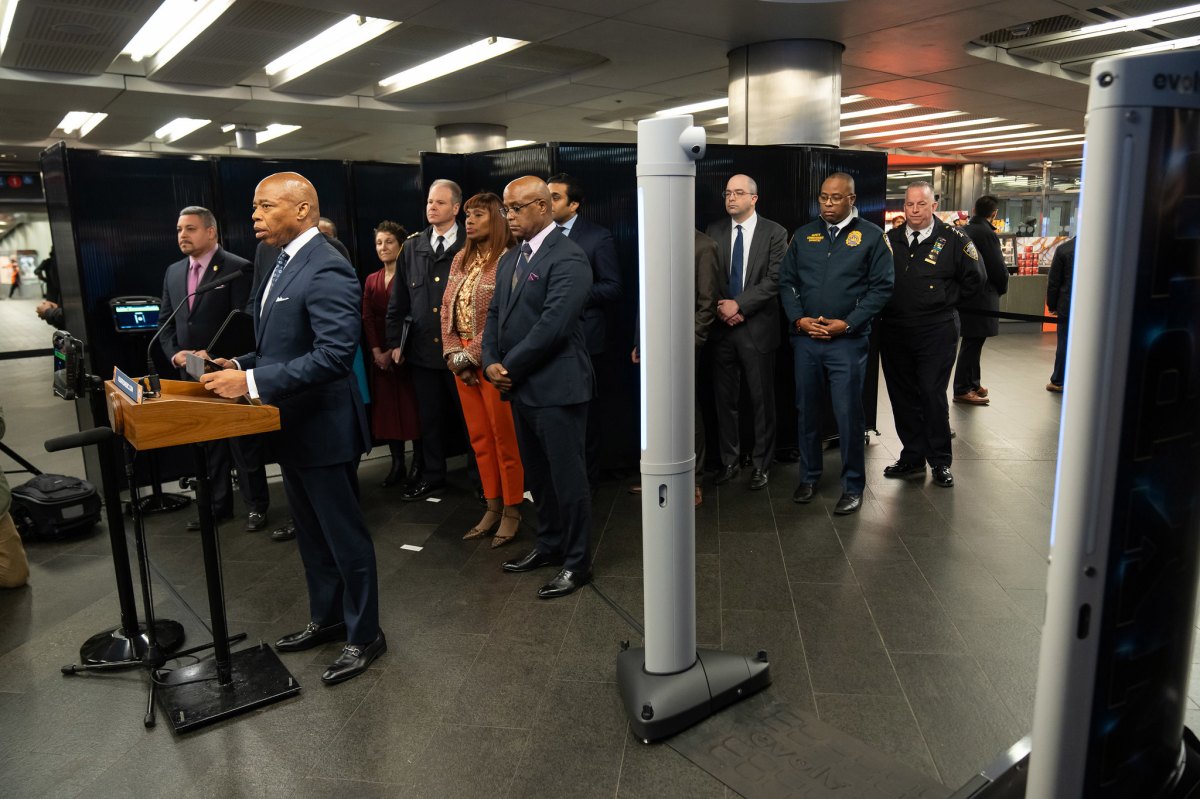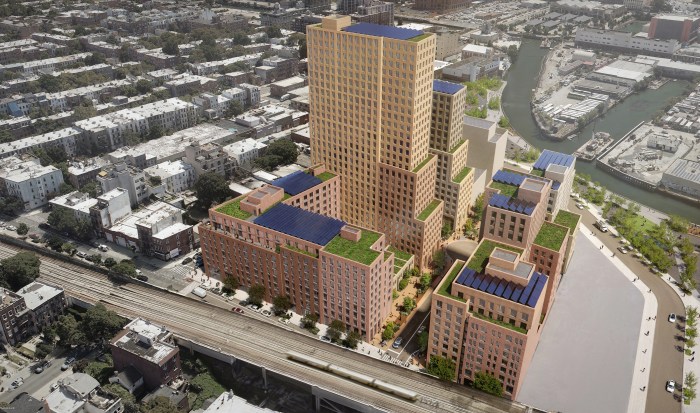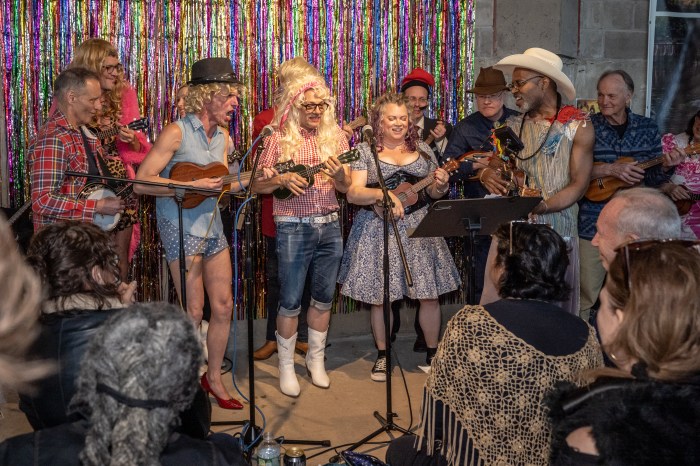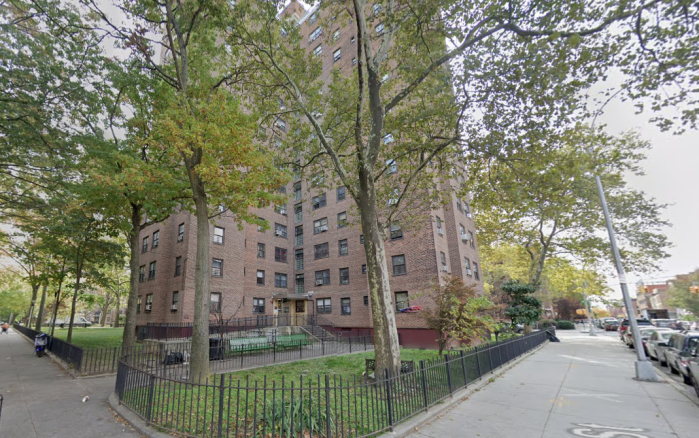The city must halt its rezoning until the feds complete their cleanup of the Gowanus Canal Superfund site, locals demanded at a recent community meeting.
Members of the local watchdog organization the Gowanus Canal Community Advisory blasted reps from the Department of City Planning for moving ahead with the controversial rezoning, which would likely see thousands of newcomers join the neighborhood, before the Environmental Protection Agency can mitigate the millions of gallons of rainwater and raw sewage that run into the fetid canal every year, according to one Gowanusaur.
“Why wouldn’t the city go ahead and finish the tank to bring some real [Combined Sewage Overflow] relief before any rezoning. That to me just seems to be a no-brainer,” Katia Kelly said at the St. Mary Star of the Sea retirement home on March 26.
The department must wait until the city can assess how much overflow the canal can handle with the amount of people living there now before its proposal opens the floodgate for eager developers to build 22-story towers along Brooklyn’s Nautical Purgatory, according to Kelly.
“Why wouldn’t you go ahead and plan? I mean we’re talking about city planning, planning enough to hold CSOs,” she said. “Let’s build the tanks first and then see what this area can hold.”
Some 377 million gallons of overflow from raw sewage and rainwater pours into the canal every year and the city is required under the Federal Superfund program and the Clean Water Act to invest in infrastructure to reduce the amount to 115 million gallons per year.
For years the plans were to build a four and an eight million gallon tank at the head of the canal, but two months ago, the city proposed building a 16 million gallon tunnel instead of the cisterns, which the feds would still need to sign off on.
The construction of either the tanks or the tunnel will not wrap up until 2030.
The city just announced it will host a public scoping meeting on April 25, when locals can weigh in on the environmental review officials must conduct before the rezoning proposal begins its journey through the roughly seven-month Uniform Land Use Review Procedure, which it must pass before any of the tall buildings can go up.
The department has yet to announce a start date for the review procedure, according to spokesman Joe Marvilli.
One local educator said that allowing for the upzoning before making sure the area could handle it didn’t make sense and compared the process to her own profession, asking why that didn’t apply to keeping the public safe.
“We have to say in September where we want to get to in June,” said Triada Samaras. “We can’t start in September and say ‘I think we’ll go this way.’ It’s now illegal for teachers to do this; we’re being held to this standard, so I don’t see that when it’s the public health that’s at issue, why we can’t start at the end.”
But despite residents’ growing concerns, the rezoning’s chief planner argued that waiting for the necessary infrastructure first wouldn’t be feasible given the city’s affordable housing crisis.
“When we propose density of moderate density or higher, there’s a lot of questions like this. Not just sewage, but also transit and schools and people saying, ‘why don’t you build every single school before any development ever happens.’ And so there’s a lot of differing opinions on that,” said Jonathan Keller.
“But we also have to talk about the tradeoffs, the tradeoffs of an affordability crisis, the fact that we also have 60,000 people who are homeless and that we’re looking to accommodate growth and that we can’t just stop change from happening,” the planner added.
The city previously tried to rezone the neighborhood due to its location between two of the borough’s most expensive nabes, Park Slope and Carroll Gardens, but put the redrawing on hold after once-eager developers shied away when the feds named the canal a Superfund site in 2010, according to reports from the New York Times.
The renewed push to allow for higher density in the area is out of sync with efforts by the city’s Department of Environmental Protection and the federal agency to clean up the site, according to Kelly, which will create problems for both current and new Gowanusaurs down the pike.
“We’re talking about raw sewage here, we’re talking about floating, raw sewage,” she said. “You’re going to have all these new residents sitting next to a cesspool. And that’s serious to me.”
The draft rezoning is still up for debate by local pols and the community, which will allow for them to have their say as to whether the nabe can handle the extra populace.
“The process is not done. We need to disclose what is going to need to occur or if we can’t solve all the problems that are outlined in the draft proposal impact statement, that needs to be disclosed so elected officials and folks can actually have a discussion about whether this should actually be approved or not,” Keller said.
Keller suggested that locals voice their concern at the upcoming scoping meeting, which will be held in the auditorium of Middle School 51 at 350 Fifth Ave., at Fourth Street, on April 25 at 4 p.m.






















